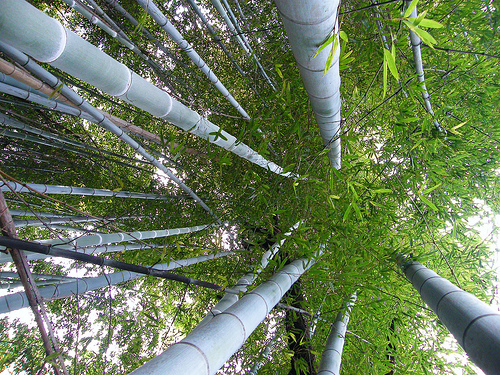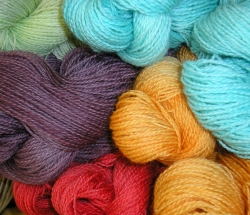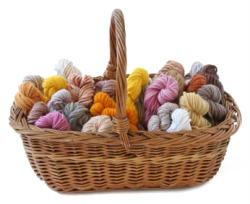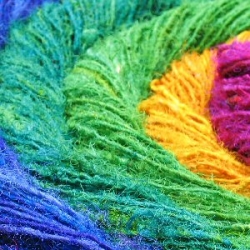We talked last year about the pros and cons of bamboo. Like hemp, growing bamboo is easier on the environment than conventional fibers such as cotton. Bamboo is technically a weed, which means it grows fast and requires no pesticides and very little water.

One downside to bamboo comes during the production process. Since the plant itself isn’t fibrous, it’s mashed down into sort of a chemical slurry and then pressed into fabric. The process is similar to making rayon. It’s toxic for workers, and it strips the bamboo of its beneficial antimicrobial properties.
There’s also the trouble that comes with anything that gets popular. Despite its speedy growth, there is still a threat of overharvesting bamboo. According to the U.N., around 600 varieties of bamboo are extinct or threatened.
Wait…that doesn’t sound fab at all! Well, Greenyarn, a new Boston-based company, has a new approach to producing bamboo fabric that’s worth a look!
Rather than the scary chemical mush process, Greenyarn produces its Eco-Fabric using “bamboo charcoal,” which is made by heating the bamboo in a kiln. Here’s how the process works:
Bamboo carbonization can be divided into four stages according to temperature and products situation in a kiln. Firsts stage drying: the temperature is below 120℃ and the speed of carbonization is slow. Heat is used to evaporate the water in bamboo, and the chemical composition of the bamboo is still intact. Second stage pre-carbonization: the temperature is in the range of 120℃ to 260℃ and there is a distinct chemical reaction in bamboo. The unstable chemical compounds begin to decompose and carbon dioxide and carbon monoxide are released.
Third stage carbonization: the temperature is in the range of 260℃ to 450℃, and the bamboo is decomposed into liquid and gas products. Liquid products contain much acetic acid, methanol and bamboo tar. Flammable methane and ethylene in gas products are increasing while carbon dioxide production is reduced.
Fourth stage calcinations (refining stage): the temperature is over 450℃. The bamboo is becomes charcoal by means of providing a mass of heat, emitting the volatile substances and to enhance non-volatile carbon. Based on the temperature in this stage, the bamboo charcoal can be divided into three groups (low-temperature, middle-temperature and high-temperature charcoal). The quality and properties of bamboo charcoal differs with different temperatures during the refining stage.
 The resulting bamboo charcoal retains the plant’s natural antifungal and antibacterial properties.
The resulting bamboo charcoal retains the plant’s natural antifungal and antibacterial properties.
I’ve got a few concerns about this process, though it does sound better than the conventional methods. They don’t mention how they deal with the CO2, carbon monoxide, or methane by products that they mention. Also, with so much heat, you’ve got to wonder how much energy it takes to produce the charcoal. They don’t get very specific about what happens between making the charcoal and the “nano particles.” According to their site, “Bamboo charcoal is sent for further processing and made into fine nano particles.” That could really mean anything. From the pictures, it looks like they’ve ground the charcoal down into a finer powder, but looks can be misleading.
They mention specifically that they use moso bamboo, which grows at high altitudes in the mountains of Taiwan. It regrows in about five years. I couldn’t find any information on whether moso is one of the threatened bamboo species.
I do really like Greenyarn’s mission statement: “Greenyarn strives to produce revolutionary products using environmentally friendly process and materials.” It gives me a little hope that the mystery process between charcoal and the nano particles for spinning might not be problematic. They also say that they “do not support industry harmful to the environment, and manufacturing process are sustainable. We work with certified and reputable factories to manufacture products that are safe and consistent in quality.”
So what do you guys think? Does Greenyarn Eco-Fabric sound like a better bamboo fabric? If you want to give Greenyarn a whirl, they have a list of retailers on their website.
Image Credits:
Bamboo Charcoal. Creative Commons photo by suajack
Bamboo. Creative Commons photo by emrank









This blog was not only informative but well documented too. It definitely motivated me to do more research and will be helpful to the many customers who call inquiring about our own selection of beautiful organic bamboo and cotton fabrics. Thanks again!
Moso bamboo (Phyllostachys pubescens) is not one of the endangered bamboo species. It’s one of the most widely grown bamboos for commercial purposes, and is grown not just in Taiwan, but all over East Asia; here is some information about bamboo production in Vietnam, for instance:
http://www.bioversityinternational.org/publications/Web_version/572/ch33.htm
So that, at least, is presumably not a concern with regards to Greenyarn.
Very interesting, and worth taking a closer look.
Like you, I wonder about the energy output required to heat large amounts of bamboo into charcoal. Also, how are the fibers created, and is that process any better for the environment than the viscose process currently in use?
I do wonder why more companies aren’t investing in creating fabrics from the actual bamboo fibers, the way hemp and linen are made.
Thanks for posting this!
Thank you for this very informative post. I love bamboo as a plant and his endless possibilities. I have however asked myself many questions about the bamboo clothing. This article proves that other people are doing the same and are looking for better solutions for the planet, even if there are still a few hazards to overcome.
Thank you very much for this well written blog about Greenyarn and promoting bamboo.
We strive our best to use processes with least impact on the environment, by not using bleach and dyes.
We also ensure our products are durable and last a long time to reduce waste disposal.
Looking forward to more of your informative blogs. Creating awareness is very important and thank you for helping in promoting sustainability.